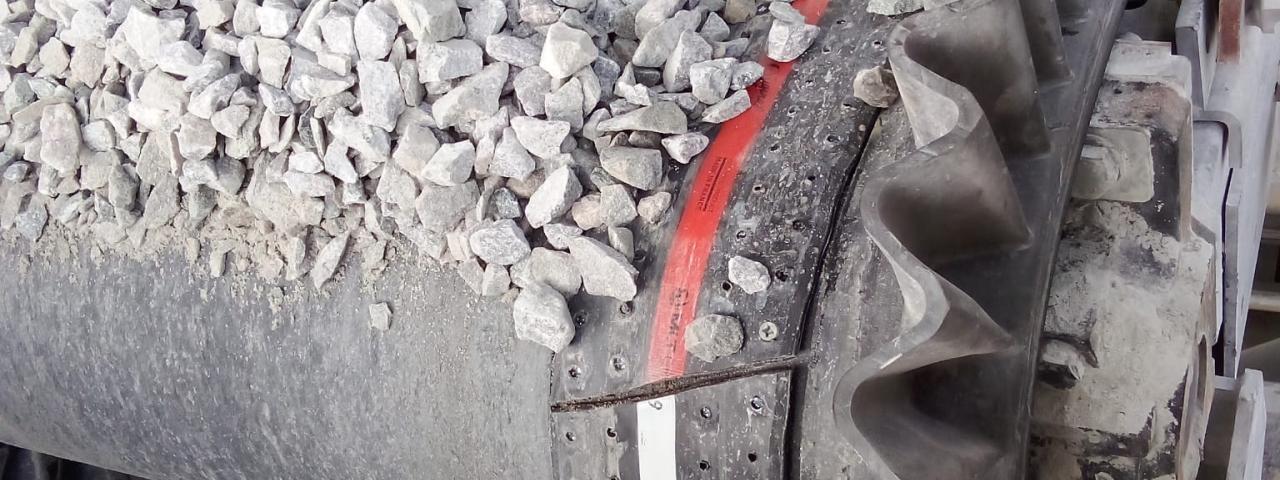

Best Practices & Methods for Conveyor Belt Repair
Conveyor belts, like any mechanical system, are subject to wear and tear, which can result in operational disruptions and potential downtime. To ensure conveyor systems operate efficiently, regular maintenance and timely repairs are essential. This article discusses common types of conveyor belt damage, effective repair methods, and criteria for deciding whether to repair or replace a damaged belt.
TYPES OF CONVEYOR BELT DAMAGES
Conveyor belts are exposed to various stresses and external factors that can cause damage over time. The most common types of damage include:
- Surface Wear and Tear: Continuous friction and contact with the materials being transported can lead to abrasions on the belt's surface, reducing its effectiveness.
- Tears and Rips: Sharp objects or sudden shifts in load can cause longitudinal or transverse tears in the belt.
- Belt Slippage: Misaligned pulleys or insufficient tension can result in belt slippage, leading to uneven wear and decreased efficiency.
- Joint Failures: Weak or poorly executed splices can break under tension, resulting in belt separation.
- Edge Damage: Misalignment or excessive side loading can fray or damage the edges of the belt, weakening its structure over time.
- Burns and Heat Damage: Exposure to high temperatures or chemical reactions can degrade certain types of belts, compromising their structural integrity.
Understanding these types of damage is the first step toward implementing an effective repair strategy.
HOW TO REPAIR A CONVEYOR BELT?
Repairing a conveyor belt involves selecting the right method based on the type and extent of the damage, as well as the operating conditions of the system. Below are some common repair techniques:
1. REPAIRING A BROKEN CONVEYOR BELT WITH VULCANIZATION
Conveyor belt vulcanization is a process that uses heat and pressure to bond the damaged ends of the belt, resulting in a seamless and durable repair. This method is ideal for fixing tears or breaks in fabric or steel-cord belts. The process involves several steps: first, the damaged area is cleaned; then, the belt ends are aligned. After that, adhesive layers are applied, and the ends are bonded together using a vulcanizing press. This technique creates a strong, long-lasting repair that restores the belt's integrity. Vulcanization is particularly effective for belts operating in demanding environments, but it requires skilled technicians and specialized equipment.
2. REPAIRING A CONVEYOR BELT USING METAL FASTENERS
Metal fasteners offer a practical solution for quick repairs, particularly in environments where minimizing downtime is crucial. This method involves securing the broken ends of a conveyor belt using mechanical fasteners, such as plate fasteners or hinged fasteners. It is ideal for belts that require frequent adjustments or replacements.
Although metal fasteners may be less durable than vulcanization, this technique is cost-effective and can be performed easily without specialized tools or expertise. Metal fasteners are commonly utilized in industries like mining and quarrying, where belts endure heavy loads and require regular maintenance.
3. COLD BONDING REPAIR OF DAMAGED CONVEYOR BELTS
Cold bonding is a flexible repair method that utilizes adhesive compounds to fix torn or damaged sections of a conveyor belt. The process involves cleaning and preparing the damaged area, applying a bonding agent, and pressing the patch into place until it sets. This technique is suitable for repairing minor damage and is designed for belts operating in less demanding environments.
Cold bonding is a cost-effective solution for temporary repairs, especially when vulcanization is not practical due to time constraints or the lack of necessary equipment.
4. MECHANICAL REPAIR OF CONVEYOR BELTS
Damaged conveyor belts can also be fixed through mechanical repair, using splices or repair patches. Compatible with various belt materials and widths, this method provides a strong, durable bond that restores belt integrity while allowing for flexibility and resistance to impact, tension, and abrasion. It is a versatile option for emergency and long-term fixes.
MLT’s SUPER-SCREW® and FIX’N GO® stand out among the most advanced mechanical repair solutions on the market :
The SUPER-SCREW® is a flexible, reinforced rubber splice that uses self-drilling screws to create a secure, high-resistance bond and eliminates the need for heavy machinery or belt disassembly. It offers exceptional durability and integration into the belt.
FIX’N GO®, is a patching solution designed for quick, permanent repairs on conveyor belts. Made from reinforced rubber and featuring a high-tensile strength structure, it ensures long-lasting performance while allowing operators to restore belt functionality in record time.
Together, these solutions provide a reliable, cost-effective alternative to traditional repair methods, ensuring optimal conveyor performance with minimal operational disruptions.
COST OF CONVEYOR BELT REPAIR
The cost of repairing a conveyor belt can vary significantly based on several factors:
- Type of Repair: Vulcanization is a durable option but tends to be more expensive due to the need for skilled technicians and specialized equipment. In contrast, mechanical repairs using fasteners are generally more affordable but may have a shorter lifespan.
- Extent of Damage: Minor surface abrasions or small tears require less time and resources to repair, which can reduce costs.
- Belt Type and Size: Larger or thicker belts, as well as specialized materials like steel-cord belts, require more effort and resources to repair, which can drive up costs.
- Downtime: Operational downtime during repairs can contribute to total costs, particularly in high-output industries where delays can significantly affect production schedules.
Regular maintenance and proactive inspections can help minimize repair costs by addressing minor issues before they escalate.
REPAIR VS. REPLACEMENT
Determining whether to repair or replace a damaged conveyor belt involves considering several key factors:
THE EXTENT OF DAMAGE
The first step is to accurately assess the extent of the damage. Repairs are suitable for minor issues like small tears, surface abrasions, or localized damage that does not compromise the belt's overall structure. However, for more severe damage—such as burned sections or widespread wear that impacts the belt's integrity—replacement is often the only viable solution.
THE AGE AND CONDITION OF THE BELT
Repairing a conveyor belt is typically effective for newer belts with minimal wear, which can extend their service life. Conversely, if a belt is nearing the end of its lifespan, replacement is usually the better option since ongoing repairs may become cost-prohibitive.
OPERATIONAL REQUIREMENTS
When considering conveyor belt repair, it is essential to account for operational requirements. If immediate replacement is not possible, a repair can serve as a temporary solution to maintain operations. However, for critical applications where long-term reliability is crucial, replacing the belt may provide more consistent performance and reduce the risk of unexpected failures in the future.
COST ANALYSIS
Last but not least, conducting a cost-benefit analysis can help determine the most economical option. While repairs may have a lower upfront cost, frequent repairs on an aging belt can become more expensive than a full replacement over time.
TO SUM UP
Repairing a conveyor belt is crucial for maintaining efficiency and minimizing operational downtime in industrial settings. By understanding the types of belt damage and the available repair methods, businesses can proactively address issues and ensure the longevity of their conveyor systems. Whether choosing vulcanization, mechanical repairs, or cold bonding, the right approach depends on the type of damage, operating conditions, and budget constraints. Additionally, knowing when to repair or replace a belt is vital for optimizing performance and cost-effectiveness. With proper care and timely interventions, conveyor belts can provide reliable performance even in demanding environments.


